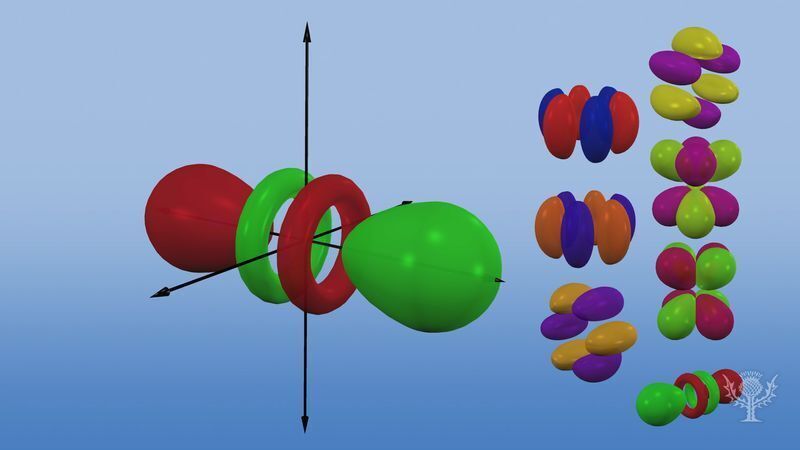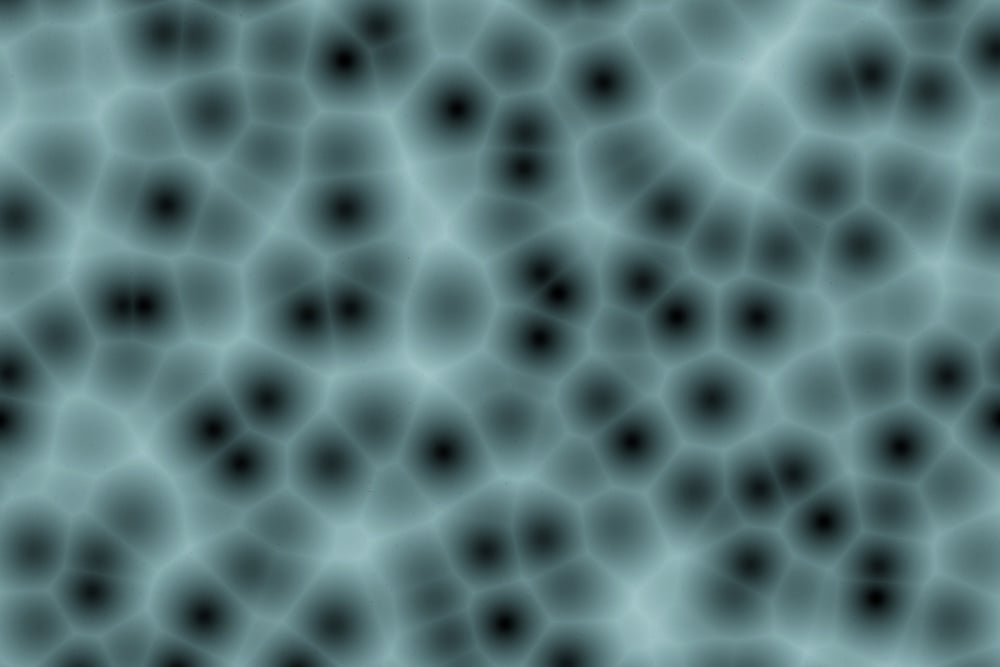The atom model with the electrons going around the nucleus, is inspired by the solar system. The better model doesn’t look anything alike. This is a naturalistic circular fallacy
If atoms were like the solar system, all of the electron orbits would lose energy and decay by emitting electromagnetic radiation.
The same type of decay does occur in the solar system as the planets emit gravitational radiation, but the decay rate is so miniscule we can’t really detect it.
deleted by creator
General relativity is famously difficult to understand, and I don’t claim to fully understand it, so I’m going to fall back to the famous rubber sheet model.
Imagine the Earth in empty space. The mass of the Earth causes spacetime curvature that extends outward away from the Earth. However, if you look a single little patch of spacetime at some distance, say, 1000 km away, that little patch doesn’t know that it has to be curved because the Earth is 1000 km away. It doesn’t know where the Earth is. It just knows that its neighboring patch is a little bit more curved in the direction that leads to Earth, and its other neighbor is a little bit less curved going away from Earth. This essentially restates the principle of locality: all physics is local physics, and there is no spooky action at a distance.
Now imagine that the Earth moves by some small distance dx in a small time dt. Going back to our little patch of spacetime, it doesn’t know that the Earth moved. So how does it change its curvature to match the new position of the Earth? It changes when its neighbors change. When the Earth moves, the spacetime immediately near the Earth stretches and bends first, then spacetime a little further away, and so on and so on. This process doesn’t happen instantaneously; it takes time for changes to propagate to longer distances. The theory predicts that disturbances and ripples will propagate via waves, called gravitational waves, and that these waves travel at the same speed of light as electromagnetic waves.
Notice I called these spacetime waves “gravitational waves.” It is common to use the term “gravity waves” for typical water waves, of the kind you might see at the beach. Those are not the same type of wave.
Now let’s talk about energy. The Earth in the solar system has some energy, including translational and rotational kinetic energy, gravitational potential energy as it sits in the Sun’s gravity well, and of course its own thermal energy and rest mass. Waves have the ability to transport energy from one location to another without transporting matter, mass, or electric charge. Spacetime waves are not any different. Because the Earth is moving in a periodic motion, it produces a periodic spacetime wave that propagates outward away from the solar system, and that spacetime wave carries some amount of energy away from the solar system. Where does that energy come from? It comes from the Earth, mainly from the Earth’s kinetic energy.
So the story is that the gravitational waves are very, very, very slightly causing the Earth to slow down in its orbit. And following the laws of orbital mechanics, this causes the Earth to fall closer to the Sun. The result is that over the long term, the radius of the Earth’s orbit gets smaller. Alternatively, the Earth’s circular orbit is an illusion, and it’s actually spiraling inward on a very, very, tightly packed spiral. That’s what I meant by “orbital decay.”
I find it hard to overstate just how small this gravitational radiation effect is for a typical solar system situation. We have an observatory called LIGO that can detect gravitational waves. It can measure a variation in distance of a tunnel of several kilometers down to well less than a single proton diameter. (Remember, this is trying to detect disturbances in space and time itself). Even still, it is only able to detect gravitational waves from the most powerful kinds of gravitational events–mergers of black holes and the like.
Essentially: Spacetime is very “stiff” and gravity is very weak.
That was a great read, thank you
deleted by creator
Electrons do orbit like planets in the solar system however they’re also waves. Which is what gives the set radii they can orbit at and keeps it all stable. The orbits can and do change due to the emission or absorption of certain quanta of radiation.
So saying like is fine. It’s not an exact description but more of a simile to help understanding. They do orbit like a solar system. Saying electrons orbit the same as a solar system would be incorrect. That’s when the maths doesn’t work and the electrons orbit would decay.
Ok, hear me out for curiosity sake. What happens if you slow down time to magnitudes less then you can observe?
deleted by creator
What if we’re all wrong and the Paulie exclusion principle is just electrons clearing their orbit of debris (sub electrons). Also, for the heaviest elements the outer shell is actually populated by dwarf-electrons. And electron sharing in molecules is just Oort Cloud stuff somehow. And our galaxy is a virus. And our bodies are a battleground. And humans are just batteries. Whait a minute —
Yes, because everybody knows the earth is in the sun’s p orbital

What if our solar system is just another balloon animal???
Look, I’m not saying our universe exists as a node in an infinite fractal of repeating universes, but one of these is the largest structure we can see and another is the smallest:


Voroni pattern. It shows up in nature all the time.
First time I heard of this, super neat, thanks for sharing. Found a good article here:
what’s the small one?
I think the top is the small one because you zoom in really far on small things in rectangles. And the bottom is the universe because it’s a distorted view of a sphere, like our full view around us.
The little ‘3’ at the bottom right. That’s where the turtles live
Atoms.
What is the average length of something very small (Plank length, electron penis, whatever) and the biggest thing (observable universe distance, actual universe length) ?
Hopefully around 6 inches otherwise I’m screwed
Around here we use the metric system. You’ve been downgraded to 6 cm
The galaxy is in Orion’s belt.
Or that the observable universe could be inside of a black hole. Don’t watch too many black hole videos before bed.
Planet 9 is not a primordial black hole and it can’t hurt you. 🙀
From my understanding of primordial black holes, if one were so close as to be in our solar system, it is very small.
Since it’s so small, it would have fizzled out through hawking radiation output a long time ago.
So yes, planet 9 is NOT a black hole that can hurt you.
Now, a pocket of warped spacetime that will one day spawn a Chaos Demon? Maybe.
It still fucks with me that we went from 9 planets to 8, pour one out for Pluto
Well at one time people “knew” that space was filled with Aether, and people knew that the universe was no more than 2 million years old.
But once you understand things more, some of the things you know turn out to be wrong.
In this case it’s more like “we called this thing a planet before we knew just how tiny it really is but it’s still cool so we now have categories for things just like it”
Which I think is neat.
You can be sad it’s not a planet, we can also be happy that it pulled one over on all of humanity for such a long time.
There are SO MANY Men In Black references in this thread and NOBODY is pointing them out and it is driving me CRAZY
That’s actually what I was going for but I didn’t want to use the “earth was flat” that K uses.
Ok thank you, that makes me feel a lot better to know that at least you intended the reference.
That’s messed up
Pour one out for Ceres, for being downmoted so long ago people forget it was a planet.
Pour one out for Makemake and Hamuhea, for being discovered so recently they never got to be planets.
I thought I heard once that our universe could be a holographic projection on a 2D plane surrounding around a black hole.
Don’t ask me for any details further than that, because I do not remember.
There was an episode of PBS Space Time on the holographic principle in general recently, and I believe they’ve also discussed the black hole thing as well.
Projected by what?
I don’t remember.
deleted by creator
My understanding is its similar in difference to a protostar and a nova
Considering how much shit orbits the sun that would be one wildly unstable atom
Me too
Now imagine if something… or someone… would poke our galaxy with an observation, and all the stars in the arms instantly collapsed into a single particle.
There are better manners to avoid the sleep

I had this thought as a kid. But I thought it was neat that we might be part of an atom of some larger molecule. Didn’t keep me awake. I had other trauma keeping me awake, like going to school.
This is something I find believable, and I wonder why it’s not commonly discussed more.
It is in the right groups. Sort of thing you can find talked about at flat earther meetings all over the globe, UFO enthusiasts if you can get a word in to ask and in Christian science journals.
Removed by mod











